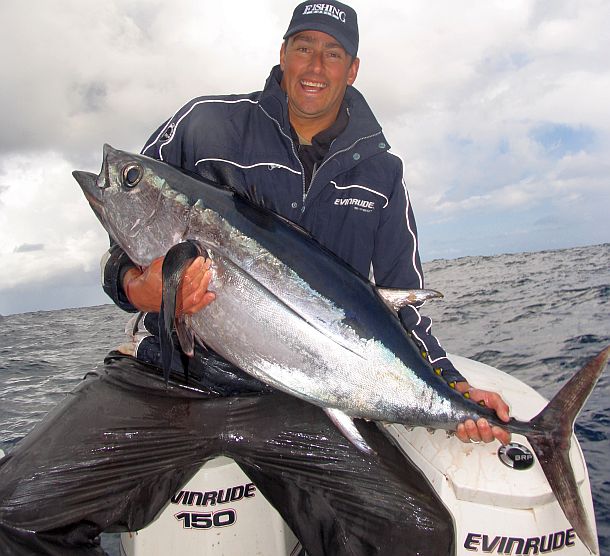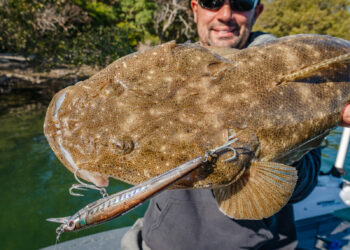OTHERWISE known as the “white meat tuna” and “chicken of the sea”, the albacore (Thunnus alalunga) is one of the world’s most widely distributed tunas.
This species can be found throughout the world’s tropical and temperate oceans from the equator to around 45° latitude in both the northern and southern hemispheres. Albacore are arguably the best eating of all the tunas and because of this they are a popular target species for both commercial and recreational fishers alike.
Like other oceanic pelagic species, albacore are most commonly found in areas where their forage species (anchovies, pilchards, squid, crustaceans) are concentrated in upwellings and along temperature fronts between cold and warm waters. In these circumstances, albacore often form mixed schools with skipjack tuna (Katsuwonus pelamis), yellowfin tuna (Thunnus albacares) and bluefin tuna (T. maccoyii).
Adult albacore are easily identified by their extremely long pectoral fins. However, smaller albacore can be difficult to differentiate from juvenile bigeye tuna (Thunnus obesus) which also have very long pectorals, but the bigeye’s pectoral fins have rounded tips, while those of the albacore are distinctly pointed.
Juvenile albacore prefer surface water temperatures around 15 to 20°C, while larger specimens are usually found deeper and can tolerate a wider temperature range of around 13° to 25°C, though they have been recorded to tolerate temperatures as low as 10°C for short periods in deep water. Near the equator larger albacore can sometimes be found as deep as 600 metres, their depth being limited not by water temperature, but by low oxygen levels.
For a tuna the albacore is relatively slow growing, with sexual maturity first being reached at around four years old at around 80cm in length. Recent studies in both the Pacific and Atlantic oceans have confirmed that the average length at first maturity in both male and female albacore is around 90 to 94cm, which are probably five-year-old fish.
Albacore are only a medium sized tuna, growing to around 140cm and 60kg, with male fish tending to reach a greater size and age than females. The sex ratio in catches of small fish is about 1:1, but males dominate catches of large fish, possibly due to differences in growth rates after maturity. Recent studies in the Western Pacific ocean found that spawning mainly occurs during the summer months with multiple “batch spawning” occurring at intervals of around 2 days apart, with the females releasing from 160,000 to 1.6 million eggs each time. Throughout its range, the albacore migrates over great distances but at least two stocks (northern and southern) are believed to exist in both the Atlantic and the Pacific Oceans, each with distinct spawning areas and with little or no interchange across the warm equatorial waters.
Although they taste great, health authorities in most parts of the northern hemisphere recommend limiting intake of albacore due to health concerns, as this species tends to accumulate higher levels of mercury than other types of tuna. In fact, testing indicates that around 80 per cent of albacore in the northern hemisphere exceed food safety guidelines for human consumption due to high levels of mercury in the flesh. For those who are wondering, the vast majority of mercury that finds its way into top level predatory fish comes from the burning of coal from coal-fired power stations. The mercury is vapourised during the combustion process, enters the atmosphere then converts to methyl mercury upon contact with water, with the heavy metal subsequently accumulating in aquatic animals and concentrating up the food chain.





















